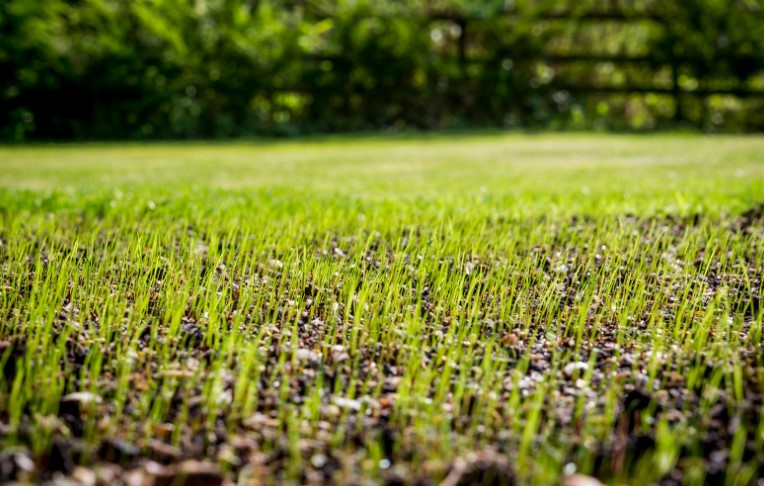The introduction should explain why cutting grass at the right time is essential for a healthy, green lawn. Readers often wonder when to cut grass, especially with the changing UK seasons, where temperature fluctuations and rain patterns can significantly impact grass growth.
I’ll explain that this guide focuses on providing a seasonal breakdown and the best lawn care practices to help them maintain their lawn’s health all year round.
This sets the tone for the rest of the guide, preparing the reader for actionable tips and useful information.
Why Is Timing Important for Lawn Mowing?
This section highlights the importance of timing when it comes to mowing. Readers will learn that mowing too early or late in the year can lead to grass damage.
For example, cutting grass when it’s too wet can cause soil compaction and root damage, while mowing during extreme heat can stress the lawn. It’s important to explain how grass growth slows down in colder months and speeds up in warmer weather.
I’ll also discuss how correct timing promotes stronger grass roots, better water retention, and reduces the risk of fungal diseases or pest infestations.
By maintaining the correct mowing schedule, the lawn can stay healthier and greener throughout the year.

What Happens if You Mow Grass Too Early or Too Late?
In this section, I’ll provide specific scenarios of what happens when you mow too early or too late. For example:
- Too Early in Spring: Mowing when temperatures are still low, or the ground is wet from frost, can tear at the grass blades and weaken the lawn, making it more susceptible to disease.
- Too Late in Summer: If the lawn is left too long, and then mowed aggressively during a hot spell, it can stress the grass. Cutting off too much at once leads to scalping, where the grass turns brown, and the lawn is left vulnerable to drought.
This section will also guide the reader on the signs to look for, such as soil conditions, grass length, and weather patterns, so they can make informed decisions about when to mow.
Seasonal Guide on When to Cut Grass in the UK
This section breaks down mowing practices by season, offering specific guidance for spring, summer, autumn, and winter. Each season brings different growth patterns, and the reader needs to adjust their mowing routine accordingly.
Spring (March – May)
Spring marks the beginning of the mowing season in the UK. After winter, grass starts growing again when the temperature consistently rises above 8°C.
The first mow should be done on a high mower setting to avoid stressing the grass, which is still recovering from its dormant state.
Key points to include:
- Start mowing once grass reaches around 7-8 cm.
- Mow once every 7 to 10 days, depending on growth speed.
- Gradually lower the mower height with each cut as spring progresses.
This section will also stress the importance of dry conditions when mowing, as cutting wet grass can cause the blades to tear and damage the lawn.
Summer (June – August)
In summer, grass tends to grow quickly, especially during early summer when temperatures are warm and there’s enough moisture in the soil.
However, during heatwaves or dry spells, the grass growth slows down. I’ll explain the need for adjusting mowing height during periods of extreme heat.
Key points to include:
- Mow once a week, but during peak growth periods, twice a week may be needed.
- Raise the mowing height during hot spells to protect the grass from drying out.
- Water the lawn early in the morning or late in the afternoon to maintain moisture, and avoid cutting during the hottest part of the day.

Autumn (September – October)
Autumn presents cooler temperatures and more frequent rainfall, which encourages strong growth before the onset of winter.
It’s an ideal time to prepare the lawn for the colder months by keeping the grass at a slightly longer height, allowing the roots to grow deeper.
Key points to include:
- Mow every 10 days as growth slows.
- Keep the mower at a medium height to protect the grass from early frost.
- Avoid cutting during wet or muddy conditions to prevent soil compaction.
Winter (November – February)
Winter mowing is less frequent, as grass growth significantly slows down. However, if the winter is mild, there may still be some growth.
The final and last cut of the year must be done just before consistent frost sets in.
Key points to include:
- Only mow if the grass is dry and temperatures are above 5-8°C.
- Adjust the mower height as high to prevent damage to dormant grass.
- Avoid mowing when the ground is found frozen or waterlogged, as this can compact the soil and damage the grass.
How Often Should You Mow Your Lawn?
This section explains the general rule of thumb: mow frequently enough that you never remove more than one-third of the grass height. Mowing too much or too little can stress the grass and hinder healthy growth.
- During rapid growth periods (spring and early summer), mow weekly or even twice a week.
- In hot, dry conditions, mow less frequently and raise the mowing height.
- During autumn, reduce the frequency but keep the grass a bit longer to prepare for winter.
This will provide the reader with a clear understanding of how their mowing frequency needs to change based on the conditions and time of year.
What is the Best Time of Day to Mow?
This section focuses on the optimal times of day for mowing grass:
- Early morning (6-8 AM): Avoid mowing, as the grass is often wet with dew, leading to uneven cuts and compacting the soil.
- Mid-morning (8-10 AM): This is the ideal time to cut your lawn, as the grass will be dry, as well as the temperatures are not too hot. The lawn has time to recover before the evening.
- Midday (12-2 PM): Mowing during this time can stress the grass, especially in hot weather.
- Late afternoon (4-6 PM): A good time to mow if the morning window is missed, but ensure the grass has time to recover before nightfall.
- Evening (after 6 PM): Avoid mowing, as the grass doesn’t have enough time to heal before the cool, damp night sets in, which can lead to disease.
In the UK, there are no strict laws regarding lawn mowing times, but it’s recommended to avoid early morning or late evening mowing to prevent disturbing neighbours.
Many councils advise legal time to mow between 8 AM and 8 PM to avoid noise complaints.

Additional Lawn Care Tips
This section provides a few extra tips to maintain a healthy lawn, such as:
- Sharpening mower blades: Dull blades in lawn mower tear at the grass instead of cutting it cleanly, which can stress the lawn and leave it vulnerable to disease.
- Mower settings: Change the mower height as per grass growth patterns.
- Watering advice: Water in the morning to prevent fungus, and avoid watering immediately after mowing.
How to Care for Your Lawn After Mowing?
This part covers essential post-mowing care tips:
- Don’t mow the grass too short, as longer blades help shade the roots and retain moisture.
- Fertilising: After mowing, especially in the spring and autumn, consider applying a slow-release fertiliser to keep the grass healthy.
- Keep an eye on pests and fungal infections after mowing, particularly if you cut grass in damp or humid conditions.
Conclusion
In the conclusion, I’ll summarise the key points on when to cut grass, reinforcing the importance of mowing at the right times throughout the year.
I’ll encourage readers to adopt a consistent lawn care schedule, which not only keeps their lawn looking neat but also promotes long-term grass health.


0 Comments